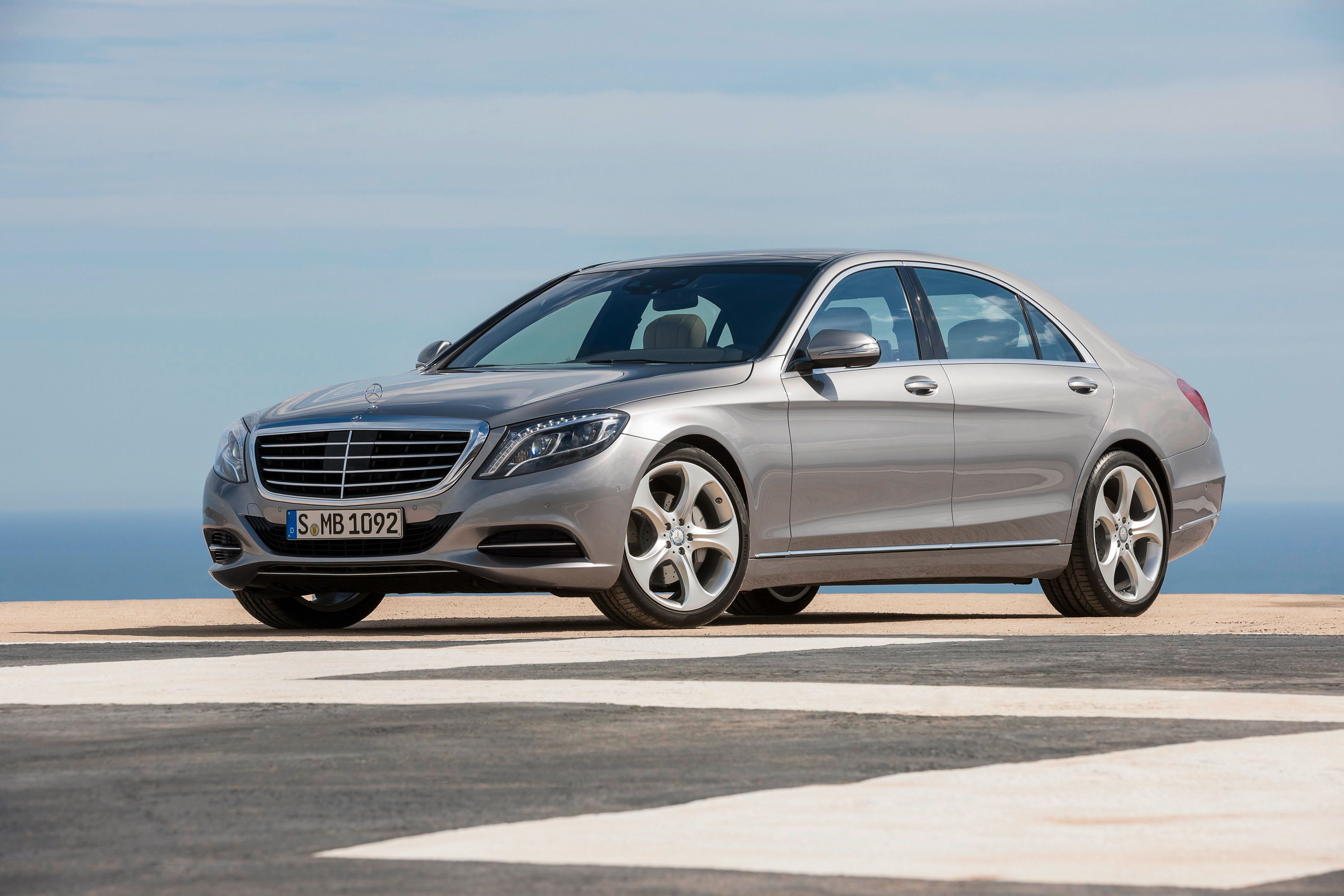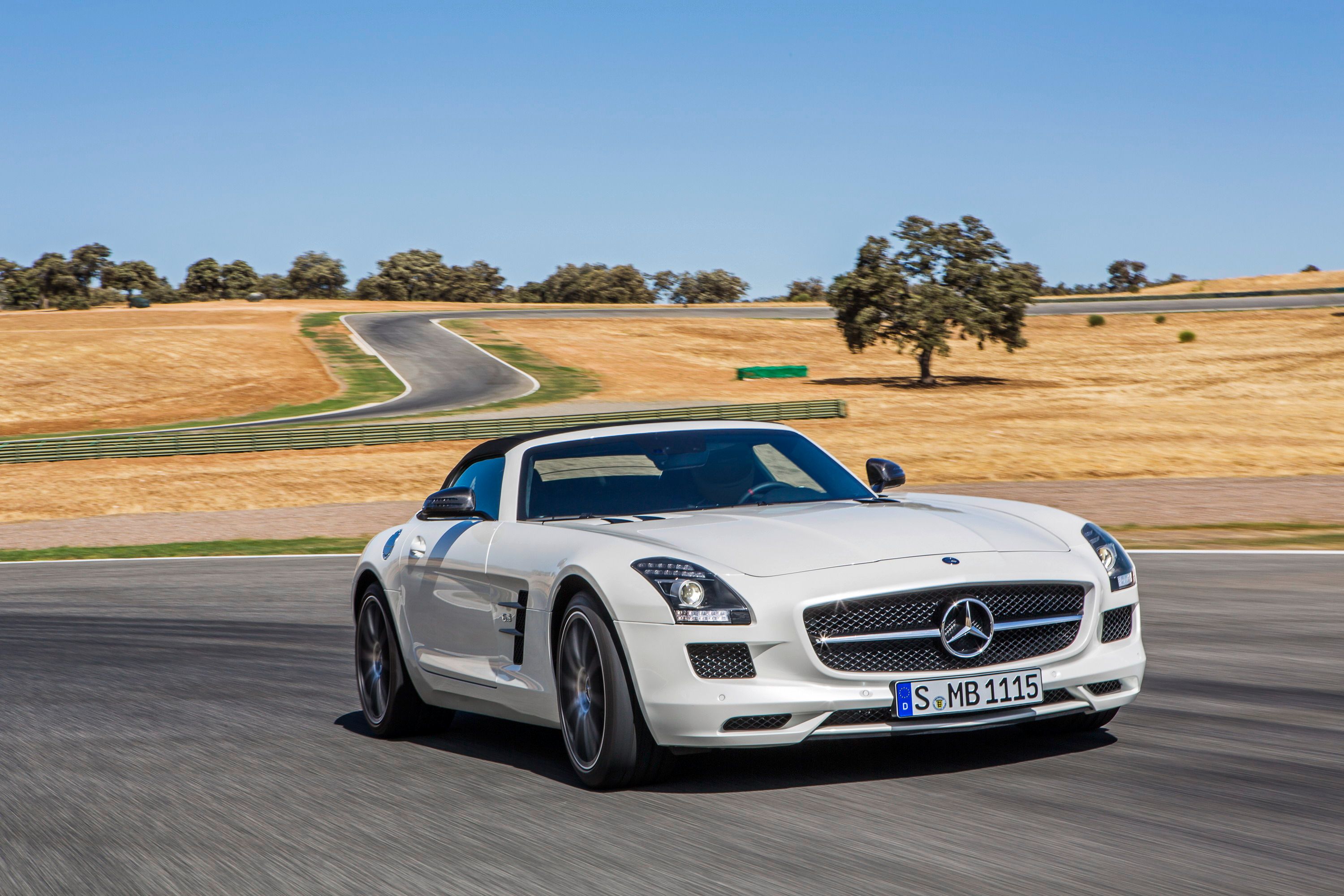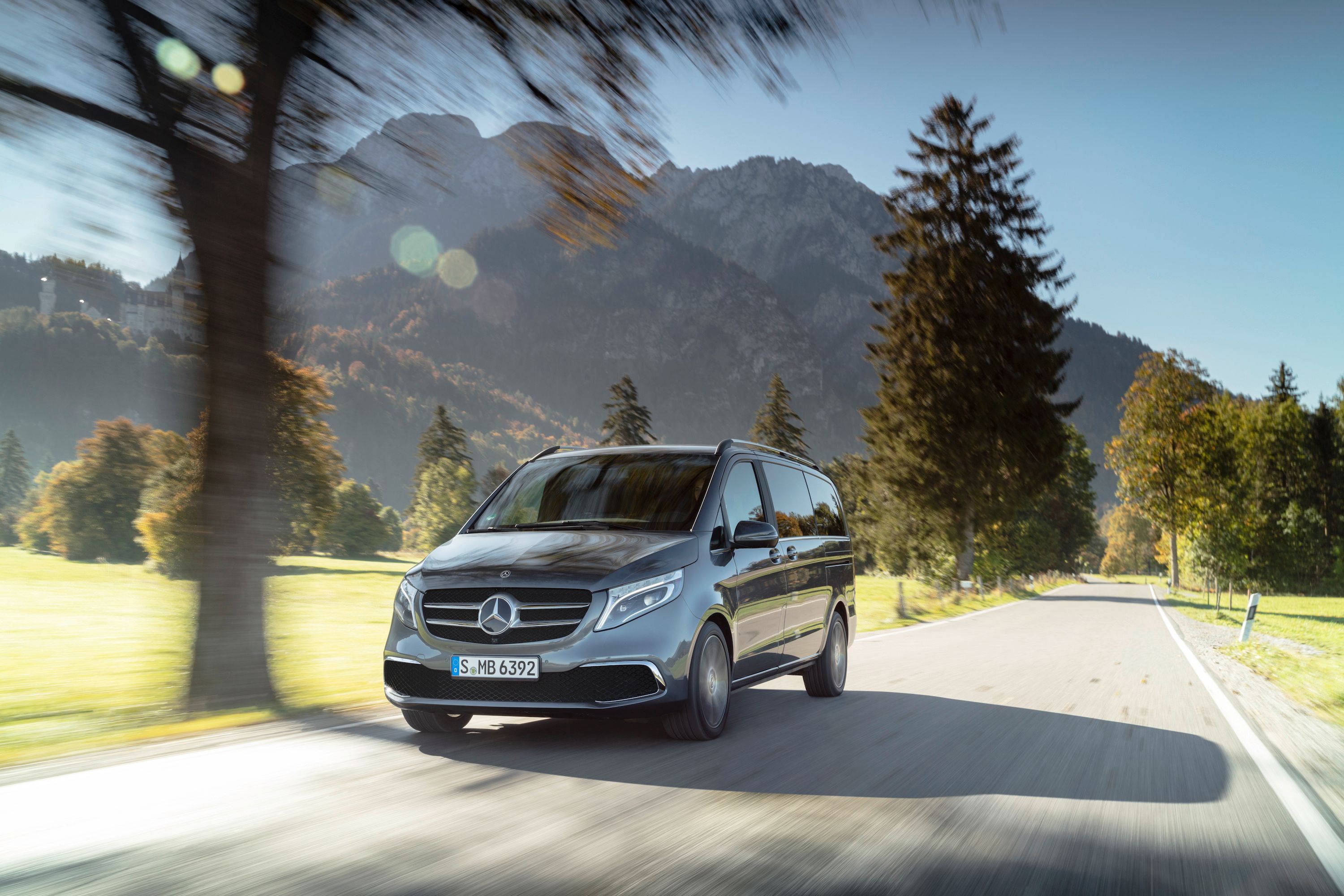Mercedes-Benz has built a solid reputation based on a couple of factors baked in the brand’s cars from day one. Performance is one of them, as are luxury, and comfort. The Stuttgart-based carmaker was quite busy over the past ten years, so here’s a list of the best Mercedes-Benz models to come out on the market between 2010 and 2020.
SLS AMG (C197)
Where do we start on the SLS AMG? Yeah, right, it’s the first performance car developed entirely by Mercedes-AMG from a blank sheet of paper. A reinterpretation of the legendary 300 SL Gullwing, the SLS packed a 6.2-liter naturally-aspirated V-8 (563 horsepower, 479 pound-feet of torque), a 47/53 front/rear weight distribution ratio and could reach a top speed of 197 mph (317 kph).
The cabin was imbued with design touches inspired by aircraft engineering, traits that can still be found in present-day Mercedes-Benz cars and the whole car tipped the scales at just 1,620 kilos (3,571 pounds).
Mercedes SLS AMG specifications
|
Engine |
6.2-liter, V-8 |
|---|---|
|
Transmission |
7-speed AMG Speedshift DCT (dual clutch) |
|
Power |
563 hp |
|
Torque |
479 lb-ft |
|
0-60 mph |
3.6 s |
|
Top speed |
197 mph |
Read our full review on the SLS AMG (C197)
A-Class (W176)
The W176-gen Mercedes-Benz A-Class was a game changer in the word’s purest sense. The model it replaced with go down in automotive history as an unimpressive oddity, but the W176 A-Class quickly fixed that. In our book, it was the best-looking hatchback on the market (premium or budget) and its larger proportions meant it could better serve the needs of a small family without breaking the bank.
What’s more, its platform was further used by Mercedes-Benz to develop the GLA crossover and the CLA sedan. Not to mention the vicious A 45 AMG, a true pocket-rocket hot hatch that extracted 376 horsepower and 350 pound-feet of torque from a 2.0-liter, four-cylinder turbocharged gasoline engine.
Mercedes-Benz A 45 AMG specifications
|
Engine |
2.0-liter, straight-four, turbocharged |
|---|---|
|
Transmission |
7-speed AMG Speedshift DCT |
|
Power |
376 hp |
|
Torque |
350 lb-ft |
|
0-60 mph |
4.2 s |
|
Top speed |
155 mph |
Read our full review on the A-Class
S-Class (W222)
The W222 S-Class, still on sale today - albeit in its facelifted variant (and soon to be replaced by an all-new generation) - brought together everything Mercedes-Benz could deliver to top-shelf levels on all fronts. It got FlexRay optical fiber wiring, an Intel Atom processor for the COMAND interface, road-scanning active suspension that adapted instantly to the roughness of the road surface, and a revolutionary multimedia setup based on two tablet-like screens (one of which served as instrument cluster).
On the inside, the W222 was unlike anything the market had to offer at that time in terms of everything: ionized and perfumed air was pumped into the cabin, the front seats got multi-setting massage, and the sheer plushness of every inch of material made the W222 a segment leader, in front of the likes of Audi A8 and BMW 7 Series. It also got a plethora of variants, including S 63 AMG, S 65 AMG, S 500 e, and S 600, as well as a Mercedes-Maybach interpretation.
Mercedes-Benz S-Class S 560 specifications
|
Engine |
4.0-liter, V-8, turbocharged |
|---|---|
|
Transmission |
9-speed 9G-Tronic automatic |
|
Power |
463 hp |
|
Torque |
516 lb-ft |
|
0-60 mph |
4.6 s |
|
Top speed |
155 mph |
Read our full review on the S-Class
E-Class (W213)
Taking a lot after the W222 S-Class, the W213 E-Class was the fifth iteration of the executive mid-range sedan and it sent the ugly as sin pre-facelift W212 away from our attention with a curvy body and almost S-Class-level interior plushness and technology (including semi-autonomous driving features such a Drive Pilot and Steering Pilot). Speaking of tech gizmos, the E-Class came fitted as standard with the dual-screen setup, which was now redesigned to have the displays housed as a single unit. The W213’s steering wheel is the first one to feature touch-sensitive buttons - the driven can swipe with his or her finger to interact with various features of the infotainment systems, such as volume and music player management. It too got hotter AMG-badged versions, including the Mercedes-AMG E 63 and E 63 S, powered by a twin-turbo 4.0-liter V-8 and fitted with a fully-variable all-wheel-drive setup and a drift mode. A facelifted version is expected in 2021, which will see the COMAND interface being replaced with the neat-looking MBUX.
Mercedes-Benz E-Class E 450 4Matic specifications
|
Engine |
3.0-liter, V-6, bi-turbocharged |
|---|---|
|
Transmission |
9-speed 9G-Tronic automatic |
|
Power |
362 hp |
|
Torque |
369 lb-ft |
|
0-60 mph |
5 seconds |
|
Top speed |
155 mph |
Read our full review on the E-Class
CLS (W218)
The CLS is undoubtedly one of the most beautiful sedans (or four-door coupés if you please) money can get you. The now-defunct BMW 6 Series Gran Coupe and Audi’s A7 are nowhere near the W218 generation of the Mercedes-Benz CLS when it comes to design. Unveiled in 2010 in Paris (yes, the W218 is 10-year-old but doesn’t show it on the outside), the second-generation Mercedes-Benz CLS could also be had as a superb Shooting Brake - at that time, the most expensive wagon in the world. In 2014, the CLS got a mid-life nip and tuck, including a diamond-style front grille, multibeam LED headlights, and the silky-smooth 9G-Tronic nine-speed automatic gearbox. So, let’s recap: looks, space, style, and grunt, because the CLS was also available in AMG guise, albeit powered by the older 5.5-liter twin-turbo M157 V-8 tuned to produce as much as 577 horsepower and 590 pound-feet of torque.
Mercedes-Benz CLS 63 AMG specifications
|
Engine |
5.5-liter, V-8 |
|---|---|
|
Transmission |
7-speed automatic |
|
Power |
518 hp |
|
Torque |
516 lb-ft |
|
0-60 mph |
4.4 s |
|
Top speed |
155 mph |
Read our full review on the CLS
SL (R231)
One of Mercedes-Benz’s most iconic models, the SL has been around for more than 65 years. The R231 is not only built entirely out of aluminum, but it’s also the last to bear the SL 63 AMG badge as of November 2019, after in 2018 Mercedes-Benz phased out the SL 65 AMG, which used a magnificent twin-turbo V-12 cranking out 621 horsepower and could reach a top speed of 186 mph (due to the electronic nannies that governed it) after sprinting from 0 to 60 mph in 3.7 seconds. Still, even with a less powerful powertrain, the SL remains one of the most recognizable and sought-after Mercedes-Benz models of all time and the current generation is bound to morph into a highly-desirable future classic.
Mercedes-Benz SL 550 specifications
|
Engine |
4.7-liter, V-8, bi-turbocharged |
|---|---|
|
Transmission |
9-speed 9G-Tronic automatic |
|
Power |
449 hp |
|
Torque |
516 lb-ft |
|
0-60 mph |
4.3 s |
|
Top speed |
155 mph |
Read our full review on the SL
GLE (W167)
The iconic ML nameplate was changed to GLE during the third-gen model’s nip and tuck in 2015. It also received a “coupé” version with an accentuated sloping roofline and it’s safe to say that the move turned the GLE into a cash cow for Mercedes-Benz. The model enjoyed a lot of success that culminated with the current generation, the W167 GLE, which retains the original model’s executive flavor but wraps it in state-of-the-art technology and the very best Stuttgart has to offer in terms of luxury, material quality, safety, and comfort.
Mercedes-Benz GLE 450 4Matic specifications
|
Engine |
3.0-liter, inline-six, turbocharged |
|---|---|
|
Transmission |
9-speed 9G-Tronic automatic |
|
Power |
362 hp |
|
Torque |
369 lb-ft |
|
0-60 mph |
5.5 s |
|
Top speed |
155 mph |
Read our full review on the GLE
AMG GT (C190)
The AMG GT came with a clear mission: it had to match the excellent Porsche 911 and try to steal customers and bring them to Mercedes-Benz’s yard. We’re not sure about how much buyers Mercedes-Benz managed to poach from Porsche with the AMG GT, but there’s not doubt that its sports car met and even exceeded our expectations. The AMG GT came as the successor of the SLS, albeit powered by a new M178 4.0-liter twin-turbo hot-vee V-8 that would end up in a lot of other Mercedes-AMG products. It was praised for the neatly-balanced chassis, perfectly-weighted steering, and hard-biting brakes, although when it comes to nimbleness, the AMG GT’s size is a disadvantage, if we can call it that. Just like the SL, the AMG GT, too, is bound to become a future classic some years from now.
Mercedes-AMG GT Roadster specifications
|
Engine |
4.0-liter, V-8, bi-turbocharged |
|---|---|
|
Transmission |
7-speed AMG Speedshift dual-clutch |
|
Power |
469 hp |
|
Torque |
465 lb-ft |
|
0-60 mph |
3.9 s |
|
Top speed |
155 mph |
Read our full review on the AMG GT
V-Class (W447)
Yeah, laugh all you want, but the Mercedes-Benz V-Class is the best travel alternative on the ground for rich people with big families that just won’t fit inside the S-Class or the CLS Shooting Brake. Called Metris in the U.S. and Canada, the V-Class not only looks good on the outside (for a van/minivan, that is) but it also flaunts a luxurious interior when specced properly. In the U.S., for example, the Metris starts at $35,580, but you can easily double or triple that price tag given the amount of optional features Mercedes-Benz has unlocked for its upmarket passenger van. It can also be fitted with Merc’s silky-smooth 9G-Tronic nine-speed automatic transmission and as of 2020, it can also be had with a full-electric powertrain as the Mercedes-Benz EQV.
Check out more details on the V-Class
G-Class (W463)
Naturally, the G-Class couldn’t have been missing from this list. The second-generation G-Class, codenamed W463 was introduced in 2018 at NAIAS in Detroit with a wider, longer, and taller body. So, why is the second-gen G-Wagen important? Well, there are multiple answers to that. Although it still looks like the good ol’ G-Class we know and love, it features a handful of technical improvements: the front axle gets independent suspension, while the rear axle remains solid. You’ll also be pleased to see that the interior is pretty much inspired by the S-Class, including the 12-inch dual displays that dominate the dashboard. Oh, and yeah, the legendary off-road prowess is still there, waiting to be unleashed from the comfort of the plushiest cabin the G-Class has ever seen in its 40-year career.
Mercedes-Benz G-Class G 550 specifications
|
Engine |
4.0-liter, V-8, bi-turbocharged |
|---|---|
|
Transmission |
9-speed 9G-Tronic automatic |
|
Power |
416 hp |
|
Torque |
450 lb-ft |
|
0-60 mph |
5.6 s |
|
Top speed |
155 mph |
Read our full review on the G-Class
What is the best class of Mercedes-Benz?
It really depends on what you’re looking for, but arguably, the S-Class rises above all its peers when it comes to comfort, luxury, and even performance. The S-Class has always been a symbol of wealth and it’s usually the first Mercedes-Benz model to get state-of-the-art technology before it’s trickled down to other models.
Why Mercedes-Benz is the best car?
Mercedes-Benz cars are considered by many the best cars out there because of the well-rounded mix of performance, looks, comfort, and luxury they offer. Whether it’s effortless acceleration, top-notch materials or simply a spirited presence that stands out in the crowd, you could arguably say that every Mercedes-Benz out there has a proper dose from each of these attributes.
When is the best time to lease a Mercedes-Benz?
Normally, it’s best to lease a Mercedes-Benz whenever the carmaker has special offers on lease deals. So you’ll basically need to be on the lookout for lease deals offered throughout the year and find what’s best for you and within the limits of your budget. Luckily, Mercedes-Benz (just as other carmakers) offer a lot of such lease deals throughout the year, so with a little bit of research and deal hunting, you can find a suitable offer quite easily.



